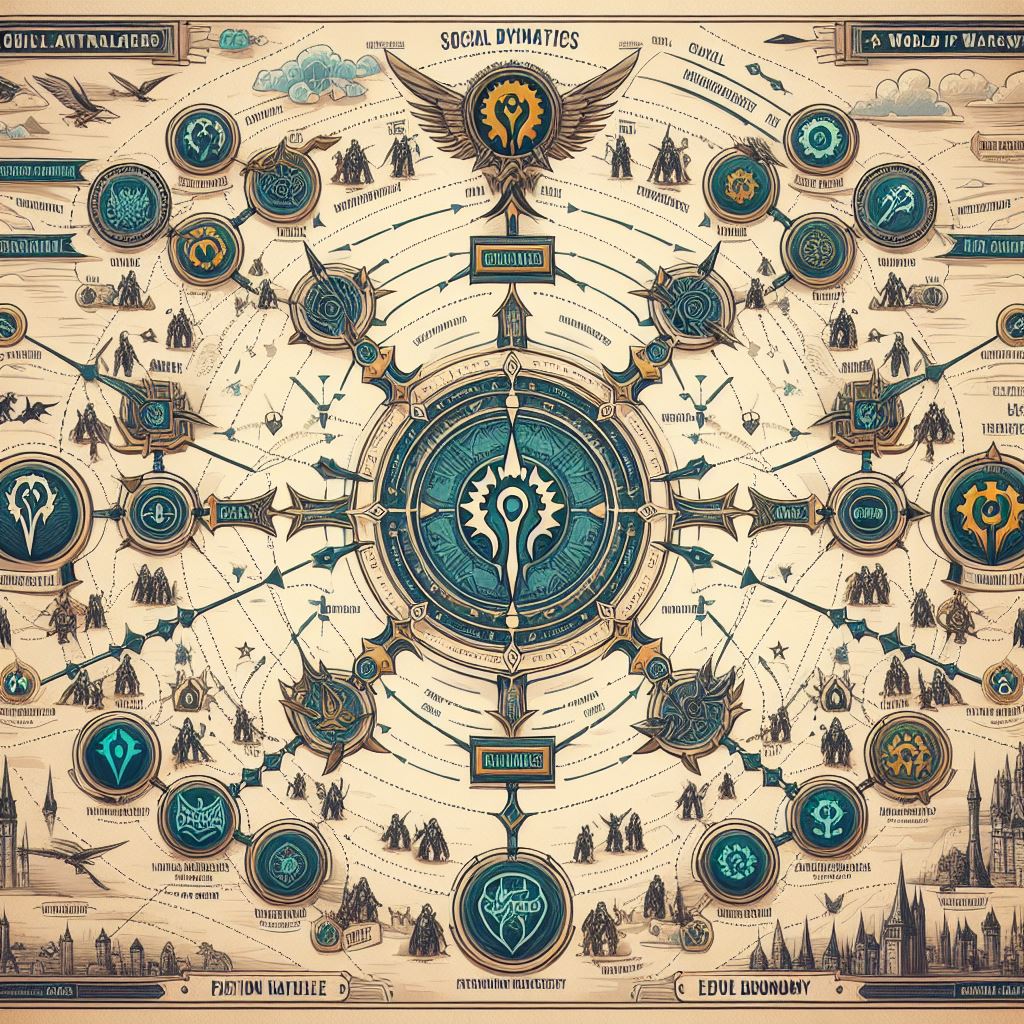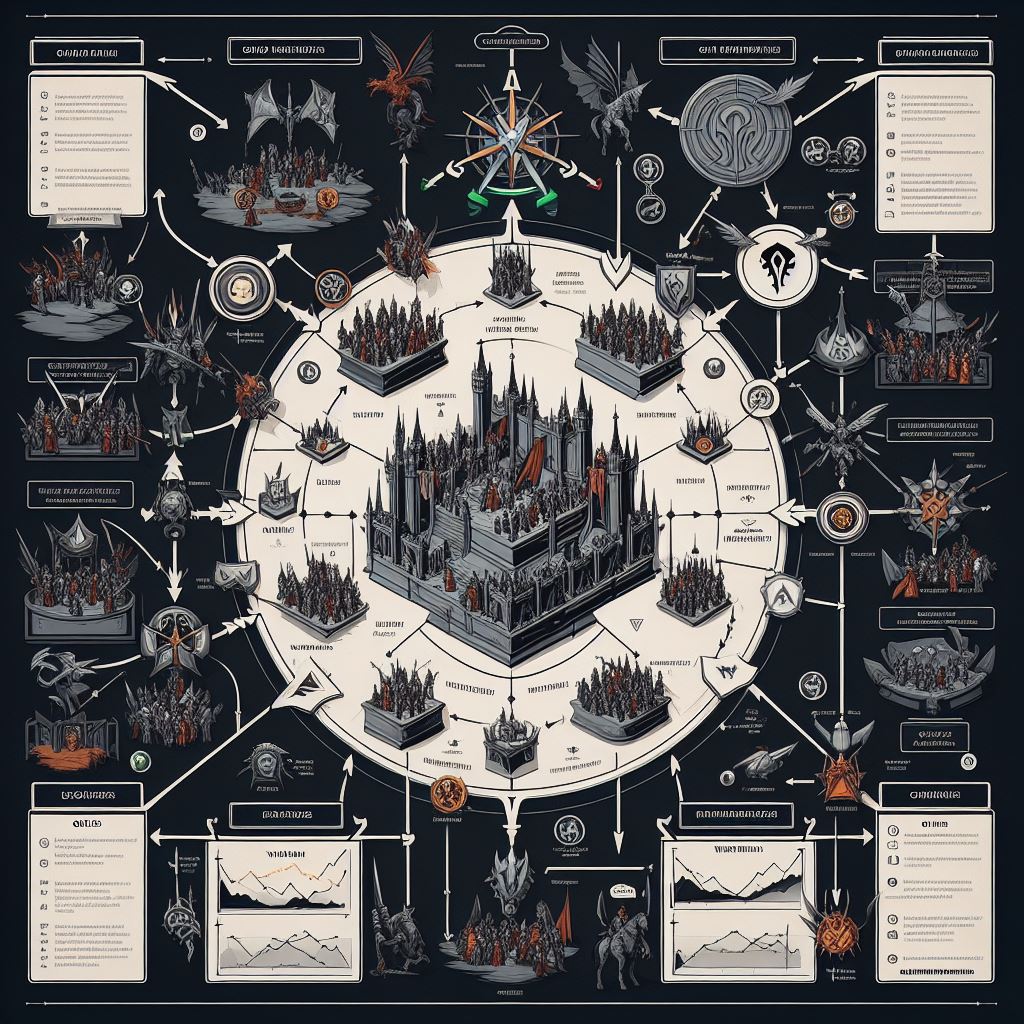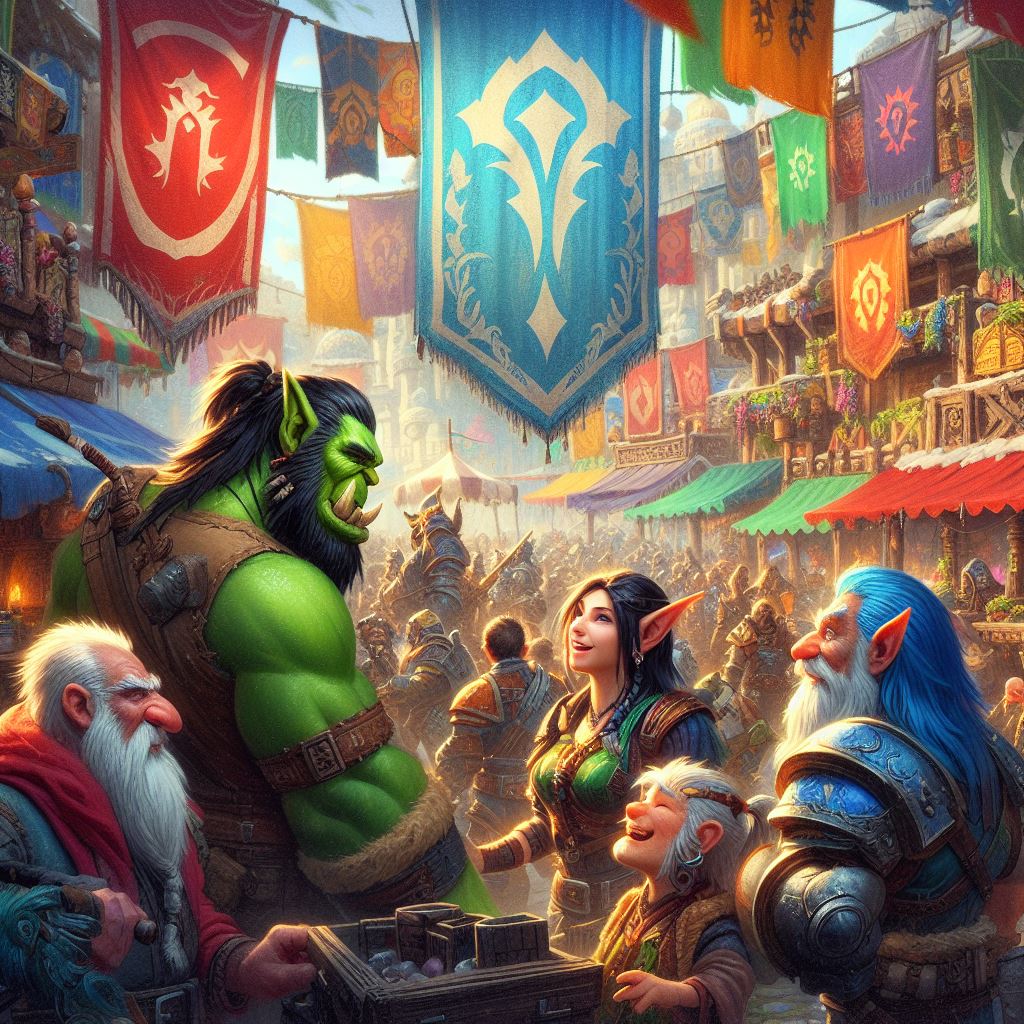Introduction to Social Structures in MMOs
Massively Multiplayer Online (MMO) games like World of Warcraft offer more than just gameplay; they provide a platform for rich social interaction. These games are not merely about individual achievement but about participating in a larger community. This introduction sets the stage for a deeper understanding of how World of Warcraft is not just a game, but a social phenomenon.

Historical Context: The Evolution of Online Communities
From the early days of internet chat rooms to the sophisticated digital realms today, online communities have significantly evolved. World of Warcraft stands as a prime example of this evolution. Here, players embark on quests together, facing challenges that require collective strategy and trust, mimicking the social constructs found in the real world.
Key Features of World of Warcraft that Foster Community Building
World of Warcraft is designed to encourage cooperation and communication. Features like guilds, raid groups, and chat systems are not just tools; they are the scaffolding of social infrastructure within the game. These features help players form lasting relationships that often extend beyond the game’s virtual realm.
The Role of Guilds in Player Interaction and Retention
Guilds are central to the social structure of World of Warcraft. They are more than just teams; they are microcosmic societies within the game’s universe, complete with their own cultures, hierarchies, and traditions.
How Guilds Shape Player Experience
Guilds provide a sense of belonging and identity to their members. This affiliation is crucial for new players who find guidance, protection, and camaraderie. For veteran players, guilds offer a platform to mentor others and exert influence within the game world.
Guild Management and Leadership: A Miniature Societal Model
Managing a guild effectively requires skills comparable to running a small community or organization in the real world. Leadership within guilds must balance resource management, conflict resolution, and member engagement to maintain a healthy and active group.

Case Study: Successful Guilds in World of Warcraft
Examining successful guilds reveals common elements such as effective communication, strong leadership, and a clear set of goals. These factors contribute to a guild’s longevity and its members’ satisfaction.
This section sets the foundation for an in-depth exploration of other aspects of social dynamics in World of Warcraft, including the broader impact on gameplay and the game’s culture. Subsequent sections will delve into social interactions, the economic implications of these dynamics, challenges within online communities, and anticipated future trends in MMORPGs.
By employing a structured outline with clear and engaging subheadings, the article will navigate through the complexities of community and social dynamics in World of Warcraft, providing readers with comprehensive insights into the subject.
Social Interactions and Their Impact on Gameplay
In World of Warcraft, social interactions are not just side effects of gameplay but integral components that can dictate the pace and enjoyment of the game. Players engage in a variety of social behaviors, from casual chatting to complex cooperative tasks.
Types of Social Interactions in World of Warcraft
The game offers a plethora of interaction types: forming parties for dungeons, collaborating in large raids, or even competing in player versus player (PvP) scenarios. Each mode offers unique social dynamics, fostering both cooperation and competition.
The Psychological Impact of Socializing in Virtual Worlds
Social interactions in World of Warcraft can significantly affect a player’s psychological state. Positive interactions, such as successfully completing raids or receiving support from guildmates, can lead to increased satisfaction and a deeper emotional investment in the game. Conversely, negative experiences, such as conflict or exclusion, can impact a player’s enjoyment and commitment.

Player Testimonials: Real Stories of In-Game Socialization
Personal anecdotes from players illustrate the profound effect of these dynamics. For instance, many players recount how friendships formed in World of Warcraft have translated into real-life relationships, underscoring the deep emotional connections that can develop through the game.
The Economics of Social Dynamics in MMORPGs
The social structures within World of Warcraft also have a direct impact on the in-game economy. Players’ interactions drive the economy through activities like trading, crafting, and selling.
How Social Dynamics Influence In-Game Economics
Guilds often control significant portions of the in-game economy through coordinated efforts in gathering, crafting, and distributing resources. This cooperation can stabilize or disrupt local markets, depending on the guilds’ objectives and strategies.
Trading and Cooperation: Beyond Just Gameplay
Trading is not merely transactional; it involves trust and reciprocity, reflecting the game’s underlying social fabric. Players often prefer trading with those they trust, which can lead to long-term trading partnerships that resemble business relationships in the real world.
Analysis: The In-Game Economy’s Response to Player Interaction
The economy of World of Warcraft reacts dynamically to the community’s social interactions. For example, the introduction of a new raid can surge the demand for certain goods, influencing market prices and behaviors. Analyzing these fluctuations provides insights into the interconnectedness of community dynamics and economic systems.
Challenges and Solutions in Online Social Dynamics
While the social dynamics of World of Warcraft are generally positive, they can also present challenges that affect the community and gameplay experience.
Common Social Challenges in World of Warcraft
Issues such as harassment, communication barriers, and guild conflicts can detract from the game’s enjoyment. Addressing these challenges is crucial for maintaining a healthy social environment.
Strategies to Enhance Social Interaction and Community Engagement
The game’s developers continuously implement features designed to improve social interactions, such as better moderation tools and more inclusive community events. These improvements help foster a safer and more engaging environment for all players.
Implementing Changes: What Works and What Doesn’t
Learning from past implementations, it becomes clear that solutions need to be adaptable and community-focused. Successful strategies often involve direct input from the community to ensure that changes meet their needs and enhance their gameplay experience.
Future Trends in MMORPG Social Dynamics
As technology evolves, so too do the social dynamics in games like World of Warcraft. Anticipating future trends is essential for maintaining an engaging and relevant gaming experience.
Predicting Changes in Player Behavior and Game Design
Emerging technologies like AI and machine learning are expected to create more dynamic and responsive social interactions. Developers might leverage these technologies to simulate even more complex social behaviors and scenarios.
Technological Advancements and Their Potential Impact on Social Dynamics
The integration of virtual reality (VR) and augmented reality (AR) could revolutionize player interactions, offering more immersive and realistic social experiences. This could lead to deeper emotional connections and a more vivid sense of presence within the game world.

Virtual Reality and AI: The Next Frontier in Social Gaming
Exploring potential integrations of VR and AI in World of Warcraft might lead to groundbreaking developments in online social gaming, creating experiences that are currently unimaginable.
Conclusion: The Lasting Impact of Community and Social Dynamics
The community and social dynamics in World of Warcraft significantly enhance the gameplay experience, contributing to the game’s lasting popularity and cultural impact. Understanding and nurturing these dynamics is crucial for the sustained success and evolution of MMORPGs.
As World of Warcraft continues to evolve, so too will the ways in which players interact, form communities, and shape the game world around them. The ongoing study and enhancement of social dynamics will remain essential for fostering a vibrant and engaging gaming community.